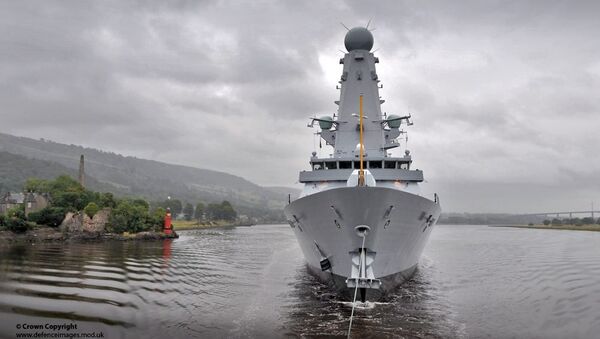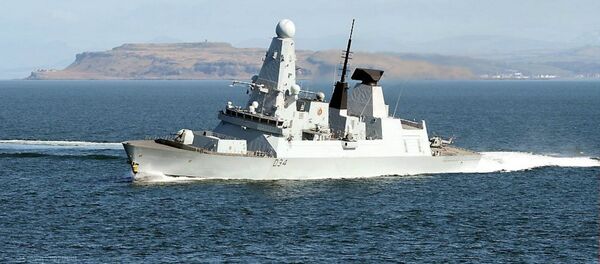When someone from the West praises Russian weapons or criticizes Western ones, look for them to come asking for money shortly afterward. US military brass played this card throughout 2016, as the United States prepared its new military budget.
This time, their British colleagues are taking the lead, as Rear Admiral Chris Parry said the country's brand new Type 45 destroyers have turned out to be "as noisy as hell" because of construction flaws, and now they're so loud Russian submarines can hear them from a distance of up to 100 miles.
"We used to put little wooden wedges between the hatchclips and the hatches in my destroyer to stop them rattling so we could keep the noise down," Parry told the Sunday Times in an interview.
According to the admiral, nobody considered noise suppression when designing the ship, which now makes them extremely vulnerable to submarines — throwing in the "Russian" to perhaps add an extra bit of trepidation.
The British Ministry of Defense responded by saying that the Type 45 was designed as an air defense battleship and that stealth was not a "premium requirement," according to The Independent.
According to British media, Type 45 are riddled with critical construction flaws. One of them, for example, prevents these ships from entering warm waters, as the engines, designed for the cold waters of Northern Atlantic, overheat and stop working. Now, each of the six $1.24-billion warships will need their engines replaced.
And replacing an engine on a ship is nothing like replacing an engine on a car. According to the Independent, this process will involve cutting a hole in the side of each ship and fixing the problem with custom-made parts. Overall, the operations will cost an additional $1.25 billion and will take nine years to complete, the Independent reports.
No one is currently coming for the Type 45 with deadly torpedoes, but one model has already displayed less-than-stellar performance during the recent march of the Russian fleet to the Mediterranean to take part in Syrian operation led by the aircraft cruiser Admiral Kuznetsov.
"In October 2016, [the HMS Duncan], escorted by the frigate HMS Richmond, was dispatched […] to intercept and "man-mark" a fleet of Russian Navy vessels […] on their way to Syria," an earlier article from the Telegraph reported.
"The destroyer then escorted the fleet out of the Channel and into the North Atlantic. A Royal Navy spokesperson said, ‘HMS Duncan experienced technical issues and will resume operations once a full assessment has taken place,'" the article continues.
For example, the British Defense Ministry spent £3.5 billion excluding value-added tax on its 600 new Ajax tanks, according to General Dynamics, the manufacturer of Ajax vehicles. (The Telegraph reports that the tanks were a mind-blowing £3.5 billion each.) Sadly, the machines turned out to be too big to fit into a transport aircraft without being dismantled first.
Another example are Watchkeeper reconnaissance drones that were ordered 12 years ago. Despite £1.2 billion having been spent on the program, they still have not entered service due to continuous malfunctions.
According to the Telegraph, all of this is the result of "years of defence cuts and expensive procurement contacts with a small number of large defence firms."
Indeed, the Ministry of Defense makes keeping a small number of contractors a policy, according to General Sir Richard Barrons, a former commander of Joint Forces Command. According to the Times, Barrons has said that buying weapons "from one place" is an "act of industrial policy as well as sovereign security," and there's little wonder the government will need to pay "a premium."
"Britain's defence budget is the biggest in Europe and it is growing every year, we are investing £178 billion as the UK steps up globally," the Telegraph cites an MoD spokesperson saying.
"We are focused on maintaining an affordable program and getting the best value for the taxpayer to deliver the cutting-edge kit our Armed Forces need to keep Britain safe."
The best value money can buy, indeed.




